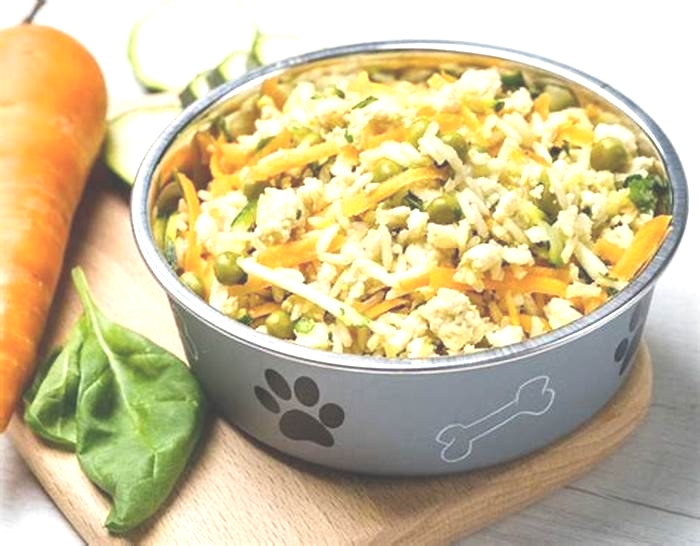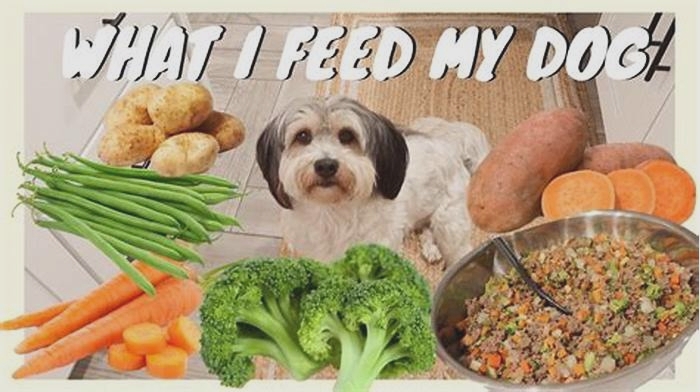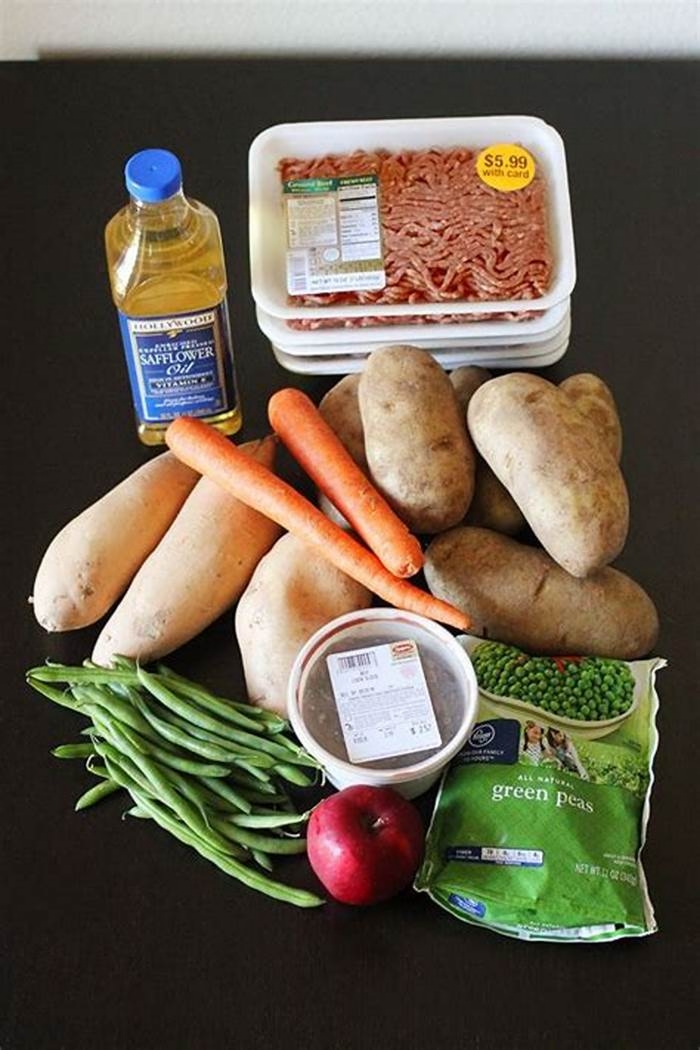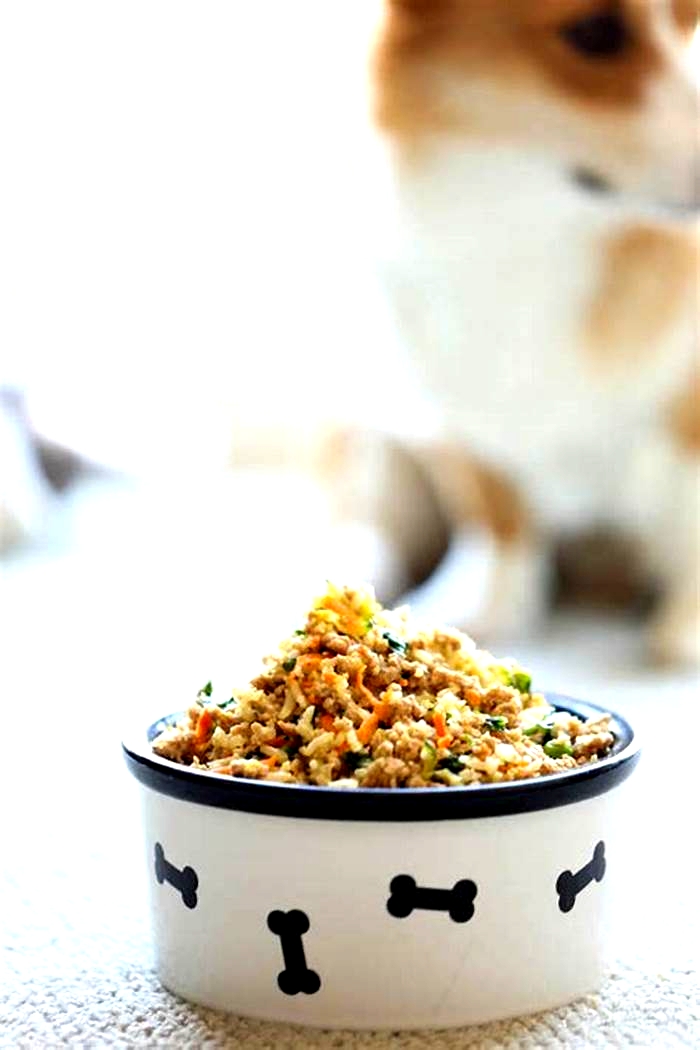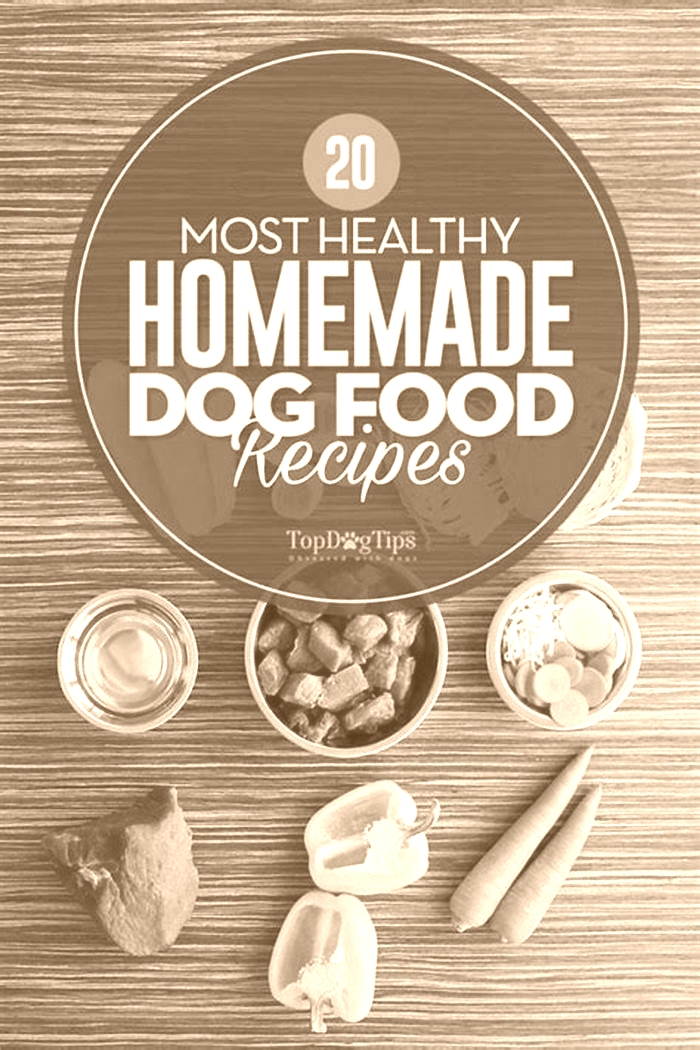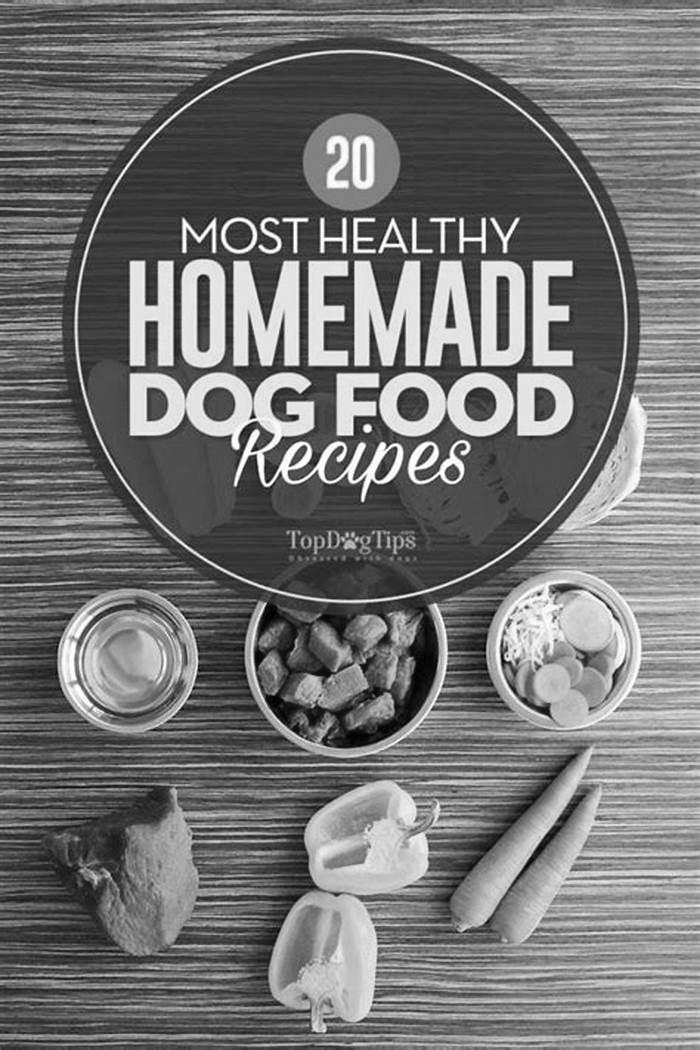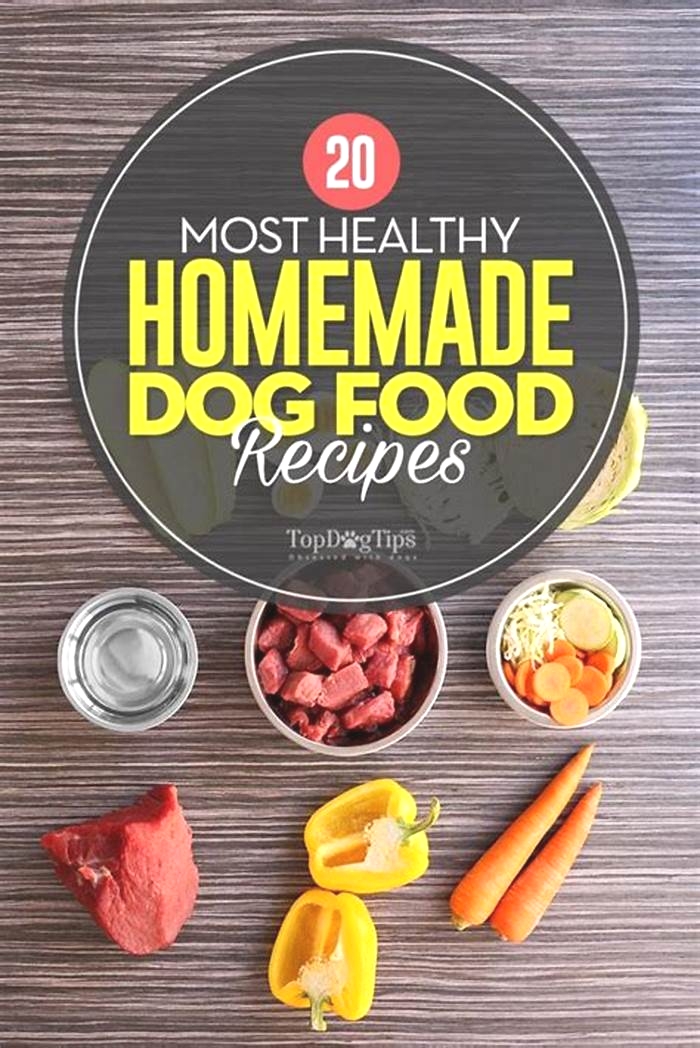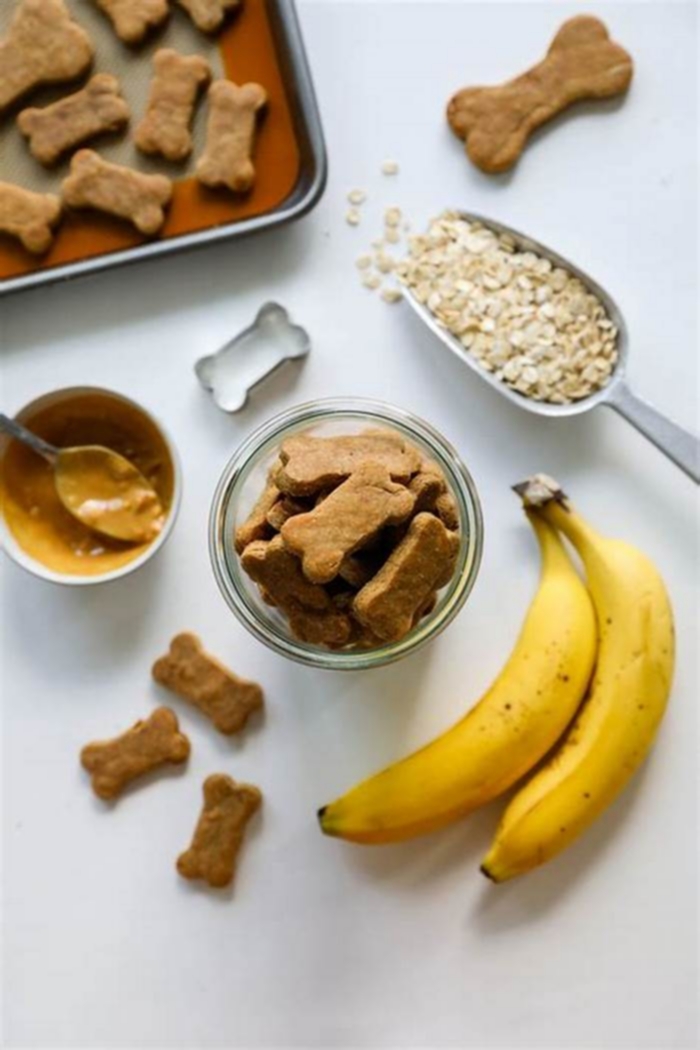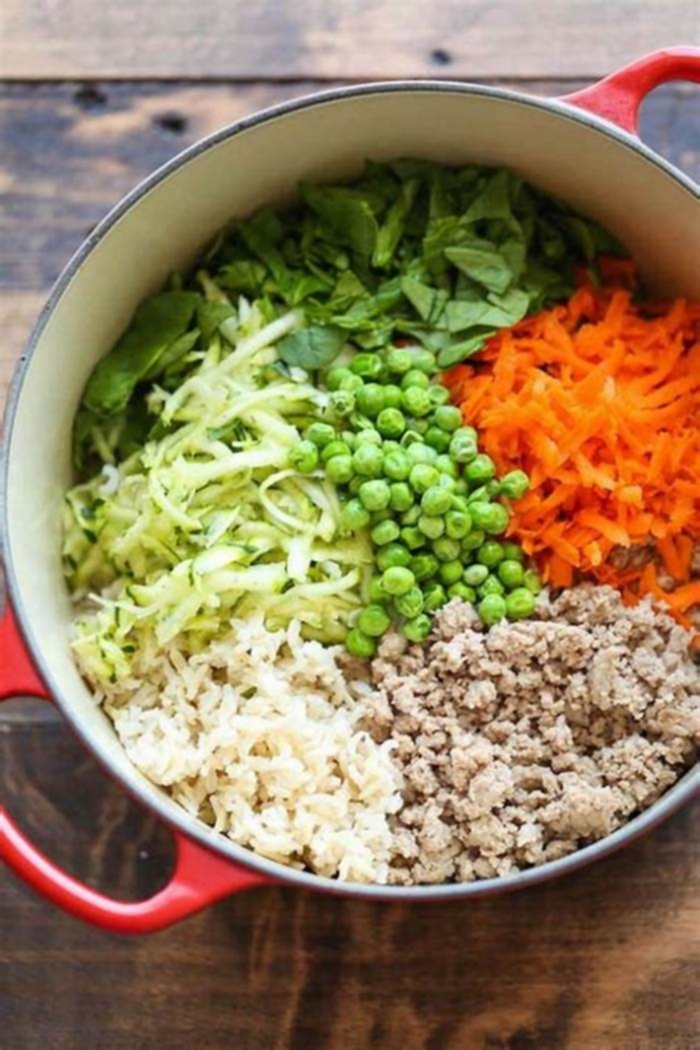homemade dog food recipes for ibd
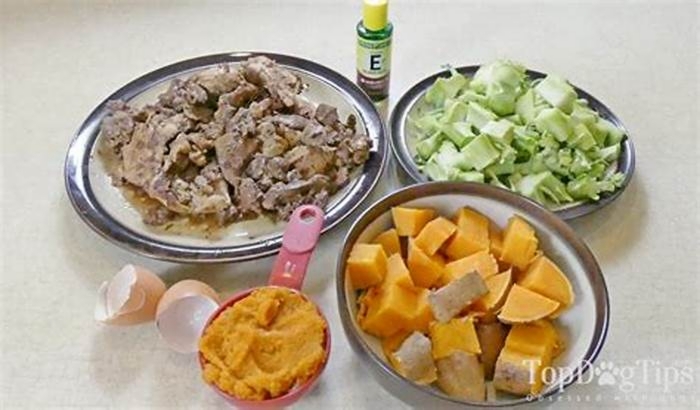
10 Home-Cooked Meals for Dogs with Colitis and IBD
Hello, dear pet parents! If youve been pacing the floor, wringing your hands over your fur babys tummy troubles, you can let out a sigh of relief. Weve cooked up something special just for you and your four-legged friend. Today, were diving into the world of home cooked meals for dogs with Colitis and IBD. Yes, you read that right!
The Recipe Rundown: Crafting Comfort in Every Bite
Before we jump into the recipes, remember, when dealing with Colitis and IBD, the key is simplicity and digestibility. Heres a table chart filled with recipes, each garnished with its own set of pros and cons, to help you navigate the menu of options.
| Recipe | Ingredients | Pros | Cons |
|---|---|---|---|
| Gentle Chicken & Rice Bliss | Boiled chicken, white rice, pumpkin | Easy on the stomach, high digestibility | Not very nutrient-dense |
| Soothing Fish Delight | Cooked salmon, sweet potatoes | Omega-3 for inflammation, high in fiber | Potential for allergies in some dogs |
| Tummy-Friendly Turkey Mash | Ground turkey, zucchini, carrots | Lean protein, low-fat | Requires additional supplements for balance |
| Hearty Beef & Quinoa | Lean ground beef, quinoa, peas | Rich in protein and amino acids, gluten-free | Higher in fat, may not suit all dogs |
| Digestible Lamb & Rice Pudding | Ground lamb, brown rice, parsley | Hypoallergenic, supports digestion | Can be expensive, richer fat content |
| Bland Diet Booster | Boiled chicken breast, boiled potato | Highly digestible, low in fat | Minimal nutritional value, temporary solution |
| Veggie-Packed Power Meal | Pureed pumpkin, boiled chicken, kale | High in vitamins, soothes digestion | Some dogs may dislike the taste |
| Egg & Potato Protein Punch | Scrambled eggs, boiled potatoes | High-quality protein, easy to digest | Eggs can be allergenic for some |
| Lean Pork & Parsnip Parcel | Lean pork cuts, parsnips, green beans | Low in fat, high in fiber | Pork can be tougher to digest for some |
| Quinoa & Duck Delicacy | Cooked duck, quinoa, blueberries | Novel protein, rich in antioxidants | Duck is a richer meat, pricey |
Navigating the Nutritional Nook: Insights and Tips
Balance is Key: While these recipes are designed to soothe your dogs gut, remember, long-term diet plans should be balanced with the right amount of nutrients. Consult with a vet nutritionist to sprinkle in the needed vitamins and minerals.
Slow and Steady: Introduce new foods slowly to your dogs diet to monitor their reaction. This is especially crucial for dogs with sensitive stomachs. A sudden menu overhaul might cause more harm than good.
Hydration Station: Always ensure your furry friend stays well-hydrated, especially when dietary changes are on the horizon. A well-hydrated pup is a happy pup!
Quality Ingredients: Opt for the highest quality ingredients you can afford. This means lean meats, organic veggies, and avoiding anything thats been heavily processed. Your dogs tummy will thank you!
Wrapping It Up With a Bow(wow)
Creating home cooked meals for your dog with Colitis and IBD doesnt have to be a chore wrapped in worry. With these recipes and tips, youre well on your way to becoming the master chef of your dogs dietary delight, offering not just meals, but moments of joy and comfort for your beloved pooch.
Now, lets take a deeper dive into the nutritional world with an exclusive interview with Dr. Barkley Woofson, a renowned veterinary nutritionist who specializes in canine gastrointestinal health. Were unpacking everything you need to know about tailoring your dogs diet to combat Colitis and IBD.
Q: Dr. Woofson, could you share your top tip for pet parents starting on the home-cooked meal journey for dogs with sensitive stomachs?
Dr. Woofson: Absolutely! The cornerstone of cooking for dogs with gastrointestinal issues is to embrace simplicity. Start with a single protein source and one carbohydrate. This approach minimizes the risk of upsetting your dogs stomach and makes it easier to identify any food sensitivities. And always remember, slow transitions are key. A sudden dietary change can exacerbate symptoms, so introduce new foods gradually over several days.
Q: Theres a lot of buzz around supplements. Are they necessary in a home-cooked diet for dogs with Colitis and IBD?
Dr. Woofson: Great question! While home-cooked meals can provide a foundation of nutrition, they often lack certain essential nutrients dogs need. Supplements such as omega-3 fatty acids, which have anti-inflammatory properties, can be incredibly beneficial. However, its critical to consult with a professional before adding any supplements to your dogs diet to ensure theyre necessary and given in the correct dosage.
Q: Whats a common misconception pet parents have about managing Colitis and IBD in dogs through diet?
Dr. Woofson: One widespread myth is the idea that a grain-free diet is inherently better for dogs with gastrointestinal issues. In reality, whole grains can be a valuable source of soluble fiber, which helps regulate digestion and can soothe symptoms of Colitis and IBD. The key is choosing easily digestible grains, like rice or oatmeal. The real villain is often not grains but rather, low-quality fillers and additives found in some commercial pet foods.
Q: How do you recommend dealing with picky eaters, especially when they need a bland or restricted diet?
Dr. Woofson: Picky eaters can indeed pose a challenge, especially when dietary restrictions limit your options. One strategy is to gradually mix the new diet with their favorite foods, slowly increasing the proportion of the new food over time. Additionally, warming the food or adding a small amount of low-sodium broth can enhance its aroma and palatability. Remember, patience and creativity are your best tools here.
Q: Finally, any parting wisdom for our readers?
Dr. Woofson: Nutrition is a powerful tool in managing Colitis and IBD, but its just one piece of the puzzle. Regular veterinary check-ups, monitoring your dogs weight and stool, and staying informed about the latest in canine nutrition can make a significant difference in your dogs health and quality of life. And never underestimate the power of love and support; its just as crucial for your dogs recovery as any diet plan.
HELP US PUT FOOD ON THE TABLE
The diagnosis of inflammatory bowel disease (IBD) in your dog can be a challenging diagnosis. Technically, biopsies of the GI tract are required to confirm that this is indeed the disease process. Veterinarians often use the term chronic enteropathy to describe dogs with chronic GI signs like vomiting or diarrhea. These cases may be further defined by their responses to treatment. For example, a dog may have a food-responsive enteropathy.
In many cases, veterinarians will recommend either a novel protein or a hydrolyzed diet approach as a first line of defense to help ameliorate the clinical signs of the disease. The idea around a limited ingredient novel protein diet is to help determine if the disease process is food responsive by changing both the protein source and carbohydrate source in the diet on the outside chance that this is just a food allergy.
Suppose your dog does not respond to a dietary change using a commercial dog food from a reputable company. In that case, many vets will suggest a hydrolyzed diet approach, which is often considered the gold standard in treatment. These diets are made with hydrolyzed protein sources where the protein fragments are so small that they should not aggravate the immune system. Studies have suggested that over half of the dogs on these diets respond positively -- but what about those that dont?
For many cases that do not respond to either limited ingredient novel proteins or hydrolyzed commercial diet approaches, the next option is a limited ingredient home-prepared diet. These home-prepared diets are often formulated to be low fat (to address IBD and protein-losing enteropathy [PLE]) that will be nutritionally complete and may garner a response in some dogs.
Purpose:
To provide a convenient resource for home-prepared diets for dogs suspected of having IBD.
Because most dogs sent to our service have already been tried on limited ingredient or hydrolyzed diets with limited success.
Limitations:
- It is not possible to predict which dogs will respond to a home-prepared diet
- Many IBD cases are not food-responsive and require medical intervention from your veterinarian or a board-certified veterinary internal medicine specialist.
Components:
- We have provided three dietary plans in this post using either a fish source (tilapia), terrestrial mammal (pork tenderloin), or poultry (99% lean turkey) as the means to try a new source of protein that your dog may not have been exposed to and may garner a response.
- The carbohydrate sources in each of these diets will come from rather novel sources and are interchangeable across the diets to provide some options if a dog does not like sweet potato or barley and to provide some flexibility to the diet plans.
- Another addition will be a novel vegetable source oil with a mix of essential polyunsaturated fats and an optional amount of fish oil for those that want to provide long-chain omega-three fatty acids in the diet plan.
- There is also a choice between two vitamin and mineral mixes that can be purchased and are essential additions to the diet.
Sequence for a smooth transition:
- Each of these recipes is designed to supply 300 kcals per 5 kg body weight. This will change for dogs of larger size because smaller dogs generally need more calories than larger dogs. Knowing how many calories your dog needs to consume is essential to doing this properly. Your veterinarian can help calculate your dogs caloric needs.
- For example, a 5 kg Havanese will eat about 300-350 kcals a day while a 30 kg Labrador may only eat 1200 kilocalories daily, showing the disparity between weight categories and true caloric needs.
- If you plan on using one of these diet plans to start a 6-week trial of home cooking (most dogs respond within 3 weeks), you will need to gradually transition from your current diet to the home-prepared daily diet plans outlined.
- This is typically done by starting with the meat, carbohydrate, and oil source without adding the vitamin and mineral mix.
- Typically, one would start with about of the estimated ration needed from the diet plan and of the old commercial food for about 3 days.
- Then if going well, a transition to of the home-prepared ration mixed with of the commercial ration for 3 days.
- If continued success is observed, then using the home-prepared ration at about the daily amount with of the commercial ration would be used daily for three more days.
- By day 10 you will be at the full home-prepared amount that should continue to be fed at full ration from day 10 on.
- Once on the complete home-prepared ration on day 10, you can start mixing in the vitamin and mineral mix please mix in well with the food as these vitamin and mineral mixes taste metallic and may throw off the picky eater. Typically, for example, if quadrupling the recipe outlined for a Labrador who only needs 1200 kcals, you would start with a small amount of the vitamin and mineral supplement (1/4 of the total) and work towards the 2 scoops of Annamaet Enhance over 7-10 days to build the complete and balanced ration.
Usually, a diet like this is fed by dividing the daily ration into two meals, but it can also be provided over more meals per day depending on medication schedule and GI tolerance. If there is occasional vomiting, decreasing meal size with more frequent feedings may improve passage.
Assessing your dogs response to the diet transition:
- The full transition to the new diet will take 2 to 3 weeks. If your dogs clinical signs have resolved, you have achieved success, and your dog can remain on this diet plan long-term.
- If you find that things are generally better but not quite normal, you can try adding a fiber source like psyllium husk to help firm up the stools. The addition of psyllium husk can be from a generic form, or we often recommend Konsyl 100% psyllium husk powder.
- To prevent choking, the dry powder needs to be mixed in well with the food along with a little water.
- As outlined in a per 300 kcal diet, about 1 teaspoon of psyllium husk can improve fecal quality when added to this diet plan.
- If feeding more like 4 times this quantity for an average Labrador, it would be 4 teaspoons in addition to the entire diet plan made for the day.
What if there is no improvement?
- If this transition does not go smoothly and your dog is not improving, we recommend further work-up by your veterinarian.
- If you have been through novel proteins, hydrolyzed diet, and a home-prepared plan of this nature, then it's unlikely that the IBD syndrome your dog is experiencing is likely to be food-responsive.
- From here, you are just looking for a highly digestible, possibly lower fat, commercial food that your veterinarian can recommend from one of the many therapeutic enteric and hydrolyzed diet options. Your veterinarian or board-certified internist will provide ways to help manage the problem with medications designed to alter the immune response and treat GI signs symptomatically. Ask your veterinarian about the available general enteric diets to find the best food solution for your dog.
Why not get a consultation with a nutritionist?
Since 2005, we have been doing these fairly straightforward IBD consultations with mixed success, and there is a certain level of frustration on both the owner's part and the nutritionist's part considering the likelihood for success is such a mixed bag for each dog.
Dog owners who are looking for home prepared IBD diet options need this resource because it can be both very successful for some dogs and relatively easy for the owner to provide, and thus the expertise of a boarded veterinary nutritionist is not required to put together a novel protein diet of this nature. Only when there are multiple disease conditions present does this become more difficult and require such expertise.
In our experience, a dog is either food-responsive or they generally are not, and this is relatively easy to find out using our plans. If they are not responding well to a home-prepared approach within 2-3 weeks, it is necessary to seek further medical interventions from your veterinarian or board-certified internist.
1. IBD/PLE canine tilapia and sweet potato diet
- This diet plan is designed to feed an average 5 kg dog. This diet can be multiplied depending on your dog's weight. For example, a 20 kg dog will need 3-4 times this amount, depending on their activity level. Knowing your dogs caloric needs is essential, and your veterinarian may be able to help you find the right amount to feed your dog.
- Active dogs may require slightly more, while inactive dogs may require less (up to 40% more or less depending on activity). Monitor your dog and consult with your veterinarian if there is weight gain or loss we recommend regular weigh-ins with your vet after starting a home-prepared diet of this nature.
- Using a kitchen scale to measure the proportions below properly is ideal for getting the best results.
Daily diet to consist of (approx. 300 kcals):
3 ounces of baked tilapia (weight after cooking)
6 ounces of baked sweet potato with our without skins
teaspoon of hemp seed oil (can find on Amazon Manitoba harvest)
teaspoon of fish oil (Grizzly salmon oil, Nordic Naturals pet, or Welactin)
Added supplements:
scoop (2 grams) of Annamaet Enhance or teaspoon of BalanceIT Carnivore Blend
This daily portion is usually mixed with the supplements and fed over two or three meals. Please start by feeding the meat, carbohydrate, and oils for 10 days to see if your dog tolerates the new food. Please see the transition instructions in the text above.
If your dog tolerates the ration above by day 10, add one of the supplements listed above, which can be found at:
- https://www.heartypet.com/products/annamaet-enhance-dog-supplement
- https://shop.balance.it/products/balance-it-original-blends-carnivore-blend-for-dogs-cats
The supplement you choose can be gradually added over 7 days if your dog tolerates the base ingredients of the diet well. Healthful vitamin and mineral supplements of this nature can alter the taste and acceptability of diets for more picky eaters, and a gradual introduction often prevents food refusal.
This diet is approximately 32% of energy from protein, 21% from fat, and 47% from carbohydrates. During this diet trial, use of any other commercial treats should not be given, and small pieces of cooked tilapia could be used as treats. Discuss any other treats that you might like to try with your veterinarian.
2. IBD/PLE canine pork and barley diet
- This diet plan is designed to feed an average 5 kg dog. This diet can be multiplied depending on your dogs weight. For example, a 20 kg dog will need 3-4 times this amount, depending on their activity level. Knowing your dogs caloric needs is essential, and your veterinarian may be able to help you find the right amount to feed your dog.
- Active dogs may require slightly more, while inactive dogs may require less (up to 40% more or less depending on activity). Monitor your dog and consult with your veterinarian if there is weight gain or loss we recommend regular weigh-ins with your vet after starting a home-prepared diet of this nature.
- Using a kitchen scale to measure the proportions below properly is ideal for getting the best results.
Daily diet to consist of (approx. 300 kcals):
3 ounces of oven-roasted pork tenderloin (weight after cooking)
4 ounces of stovetop cooked pearled barley
teaspoon of hemp seed oil (can find on Amazon Manitoba harvest)
teaspoon of fish oil (Grizzly salmon oil, Nordic Naturals Pet, or Welactin)
Added supplements:
scoop (2 grams) of Annamaet Enhance or 1 teaspoon of BalanceIT Carnivore Blend
This daily portion is usually mixed with the supplements and fed over two or three meals. Please start by feeding the meat, carbohydrate, and oils for 10 days to see if your dog tolerates the new food. Please see the transition instructions in the text above. If your dog tolerates the ration above by day 10, add one of the supplements listed above, which can be found at:
- https://www.heartypet.com/products/annamaet-enhance-dog-supplement
- https://shop.balance.it/products/balance-it-original-blends-carnivore-blend-for-dogs-cats
The supplement you choose can be gradually added over 7 days if your dog tolerates the base ingredients of the diet well. Healthful vitamin and mineral supplements of this nature can alter the taste and acceptability of diets for more picky eaters, and a gradual introduction often prevents food refusal.
This diet is approximately 34% of energy from protein, 24% from fat, and 42% from carbohydrates. During this diet trial, use of any other commercial treats should not be given, and small pieces of cooked pork tenderloin could be used as treats. Discuss any other treats that you might like to try with your veterinarian.
3. IBD/PLE canine turkey and oats diet
- This diet plan is designed to feed an average 5 kg dog. This diet can be multiplied depending on your dog's weight. For example, a 20 kg dog will need 3-4 times this amount, depending on their activity level. Knowing your dogs caloric needs is essential, and your veterinarian may be able to help you find the right amount to feed your dog.
- Active dogs may require slightly more, while inactive dogs may require less (up to 40% more or less depending on activity). Monitor your dog and consult with your veterinarian if there is weight gain or loss we recommend regular weigh-ins with your vet after starting a home-prepared diet of this nature.
- Using a kitchen scale to measure the proportions below properly is ideal for getting the best results.
Daily diet to consist of (approx. 330 kcals):
2 ounces pan-cooked 98-99% lean ground turkey
2 ounces of instant quick oats (dry before rehydration weight)
teaspoon of hemp seed oil (can find on Amazon Manitoba harvest)
teaspoon of fish oil (Grizzly salmon oil, Nordic Naturals Pet, or Welactin)
Added supplements:
scoop (2 grams) of Annamaet Enhance or 1 teaspoon of BalanceIT Carnivore Blend
This daily portion is usually mixed with the supplements and fed over two or three meals. Please start by feeding the meat, carbohydrate, and oils for 10 days to see if your dog tolerates the new food. Please see the transition instructions in the text above. If your dog tolerates the ration above by day 10, add one of the supplements listed above, which can be found at:
- https://www.heartypet.com/products/annamaet-enhance-dog-supplement
- https://shop.balance.it/products/balance-it-original-blends-carnivore-blend-for-dogs-cats
The supplement you choose can be gradually added over 7 days if your dog tolerates the base ingredients of the diet well. Healthful vitamin and mineral supplements of this nature can alter the taste and acceptability of diets for more picky eaters, and a gradual introduction often prevents food refusal.
This diet is approximately 31% of energy from protein, 24% from fat, and 45% from carbohydrates. During this diet trial, use of any other commercial treats should not be given, and small pieces of cooked turkey could be used as treats. Discuss any other treats that you might like to try with your veterinarian.

John Loftus D.V.M., DACVIM (SAIMand Nutrition) is an Assistant Professor in the Small Animal Internal Medicine Section. He was raised in Massachusetts and attended the University of Massachusetts, Amherst. He earned a BS in Animal Science and his PhD in Animal Biotechnology and Biomedical Science, focusing on immunology. He moved to Ithaca in 2008 to attend Cornell University College of Veterinary Medicine, graduating with his D.V.M degree in 2012.



